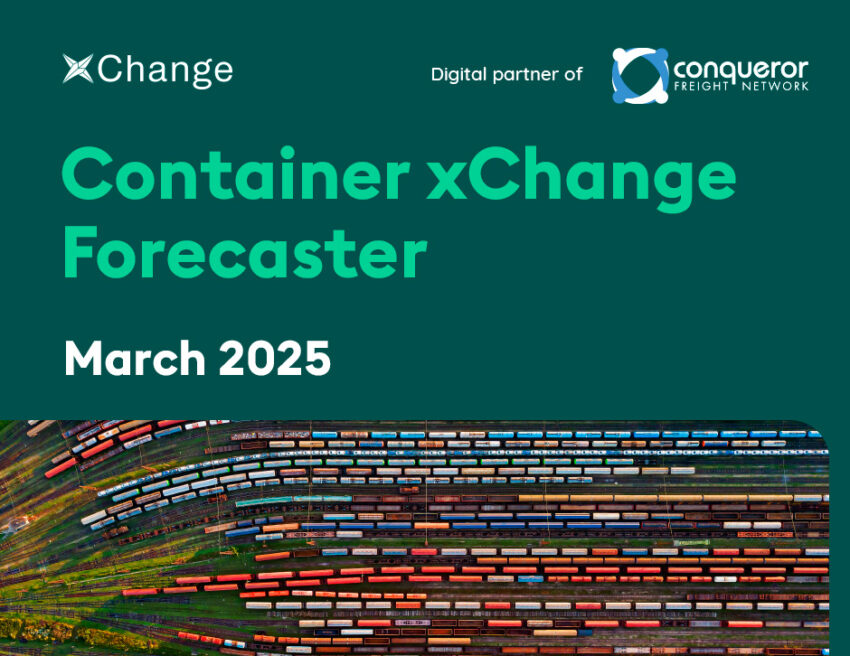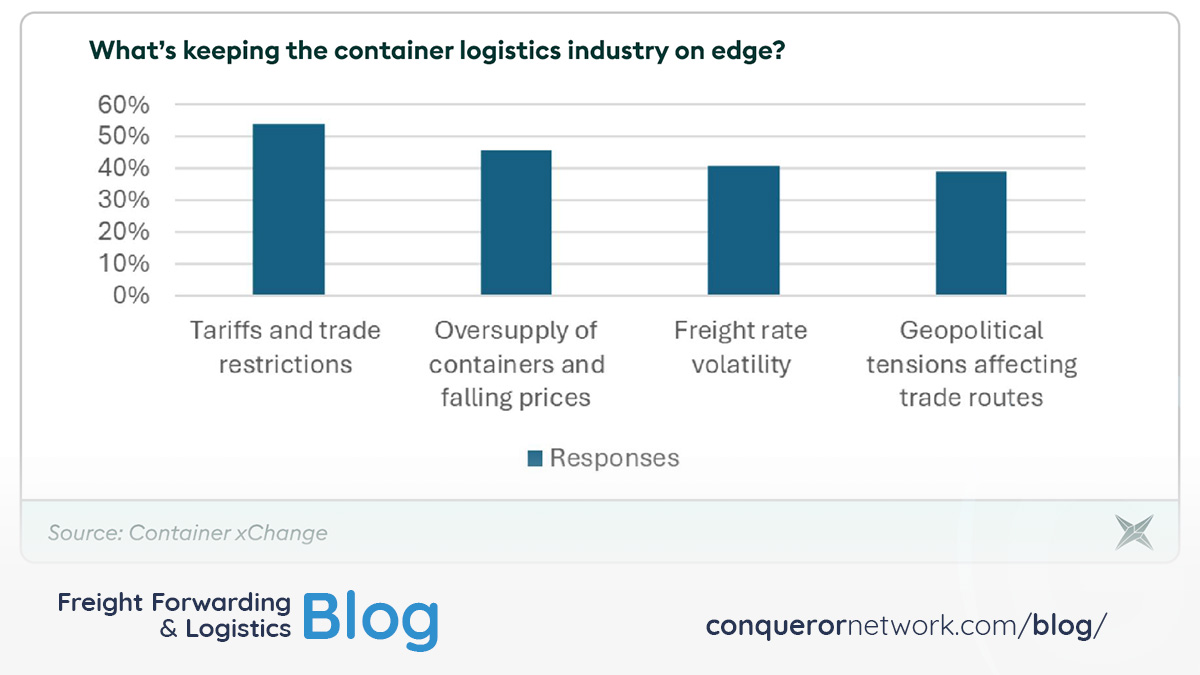Freight forwarding professionals are facing a storm of uncertainty with regard to sea freight logistics—escalating tariff wars, volatile freight rates, and an impending oversupply of containers that could send prices tumbling. The result? A challenging environment where making clear, strategic decisions feels like trying to hit a moving target. The biggest question on everyone’s mind: How will these disruptions—individually and collectively—impact container availability, pricing, and ultimately, bottom lines?
To bring clarity to the chaos, Container xChange, a digital partner of Conqueror Freight Network, hosted an exclusive webinar and workshop featuring top industry leaders and sea freight logistics experts. Their mission? To break down the impact of global trade disruptions and uncover new opportunities in sea freight logistics.
One major takeaway? The sheer volume of challenges causing market uncertainty is staggering. Understanding how each factor will shape the industry requires both time and strategic intelligence. In today’s blog, we’ll dive into the key insights from the xChange webinar, exploring exclusive forecasts on container pricing, demand outlooks, and supply estimates—critical knowledge to help you stay ahead in an unpredictable market.

Sea Freight Trends for March: Why Flexibility is Key in an Uncertain Market
In today’s unpredictable trade environment, locking into long-term sea freight contracts could be a costly mistake. With shifting regulations, fluctuating tariffs, and rapidly evolving trade dynamics, committing too soon might leave businesses trapped in unfavorable conditions—especially if new routes, suppliers, or cost structures emerge.
During a recent webinar, Peter Sand, Chief Analyst at Xeneta, highlighted the growing risks of rigid logistics strategies. “Uncertainty is toxic for trade, and businesses today are overwhelmed by shifting regulations, unpredictable tariffs, and constantly changing trade dynamics. The best advice? Stay calm, keep your options open, and avoid locking into long-term commitments without a clear upside. The rules of global trade seem to change overnight, making flexibility and real-time insights more critical than ever,” he explained.
The takeaway? Adaptability is the new competitive advantage. Instead of reacting to sudden trade obstacles, companies must focus on data-driven decision-making, risk management, and flexible logistics strategies to navigate today’s volatile market. Stay agile, stay informed, and most importantly—stay ahead.
Tariffs Are Redrawing Global Trade Routes—Is Your Supply Chain Ready?
New U.S. tariffs on Chinese imports and shipbuilding fees are already shaking up global trade, forcing companies to rethink their supply chain strategies. As a result, cargo is being rerouted, alternative markets are gaining traction, and long-term demand is shifting.
Amanda Marr, CEO of Hysun Containers, highlighted the domino effect: “The uncertainty around tariffs is creating ripple effects across the entire container logistics ecosystem. We’re already seeing enhanced efforts to reroute cargo through alternative markets like the Middle East, Indian Subcontinent, and Southeast Asia.”
With businesses actively exploring new trade lanes, Southeast Asia and Latin America are becoming hotspots for container demand. Andrea Monti, CEO of Sogese, noted that “Smaller and more agile players have an opportunity to gain market share as trade routes diversify.”
The bottom line? Flexibility and foresight are crucial. Logistics professionals who stay ahead of these shifts—leveraging alternative markets and diversifying trade lanes—will be in the best position to seize new opportunities and maintain supply chain resilience.





